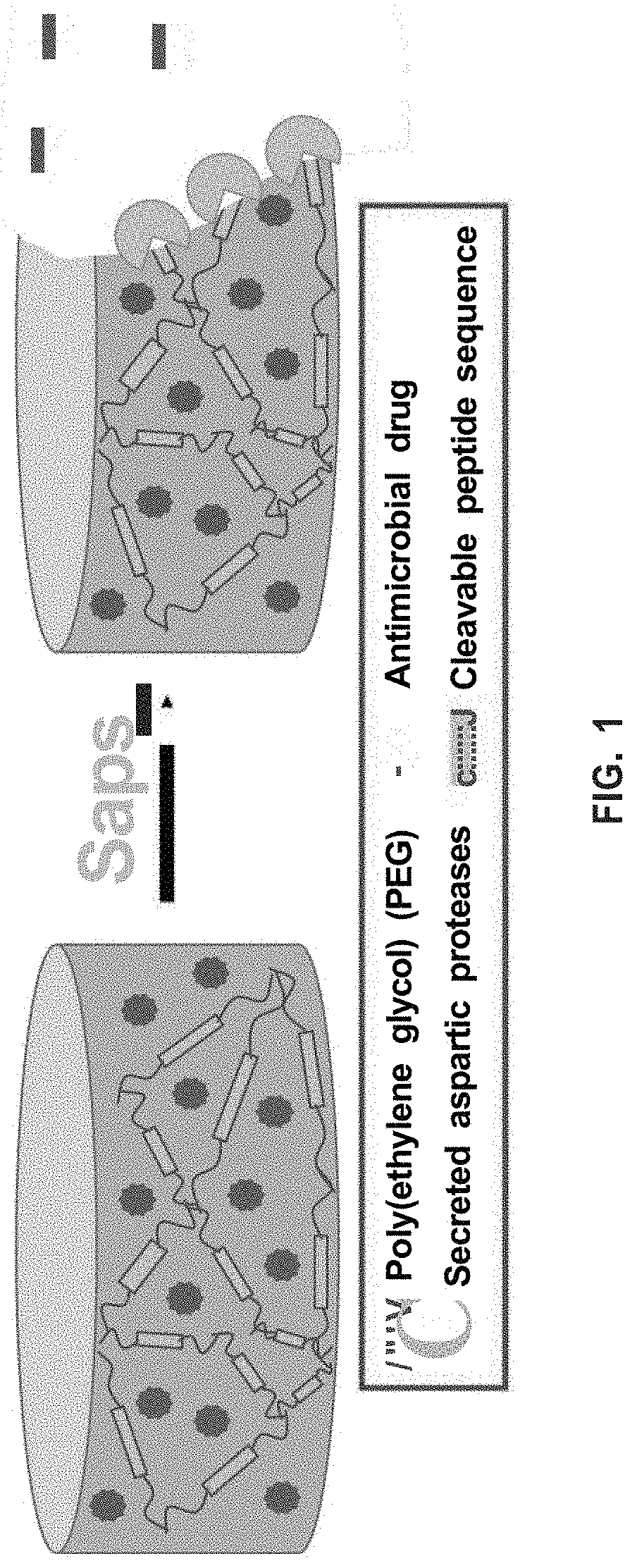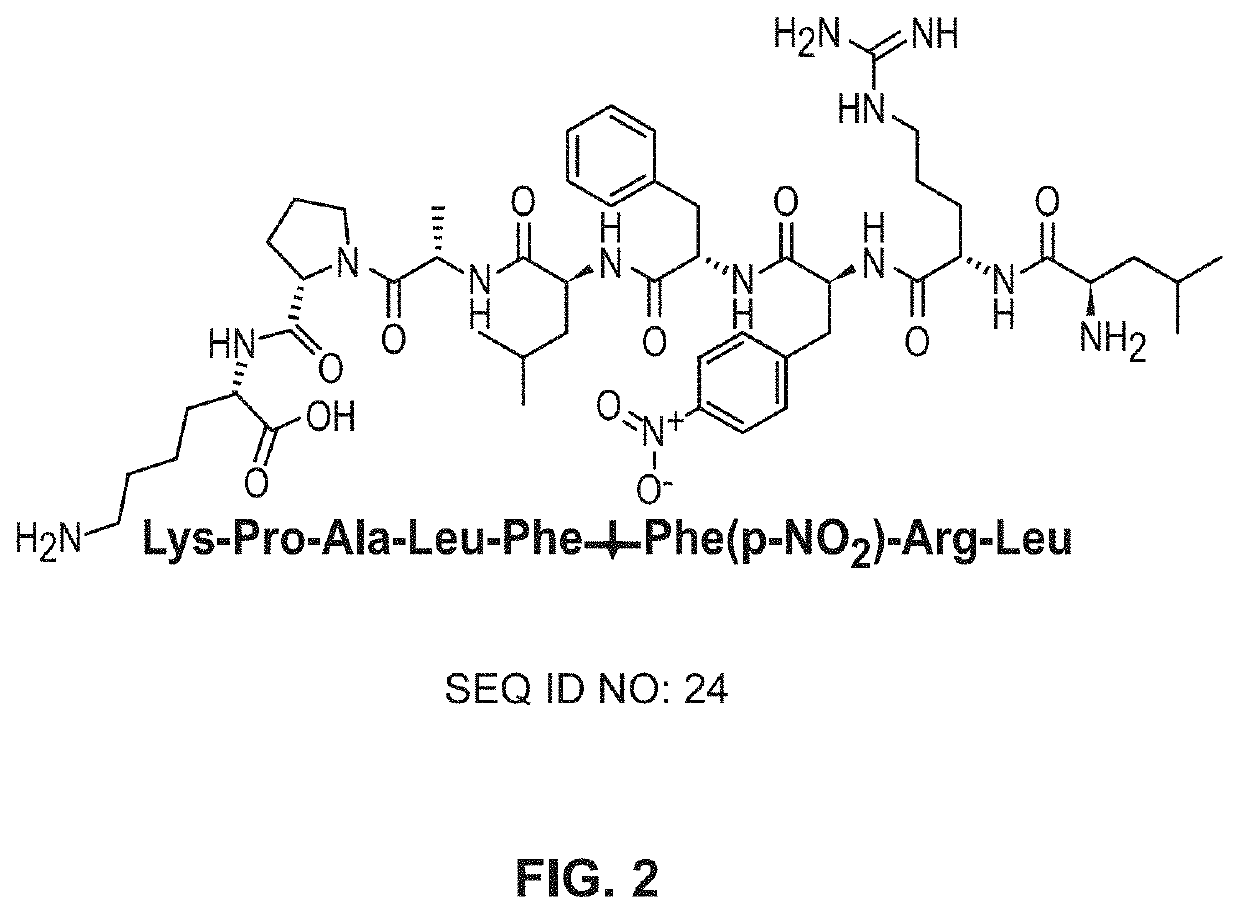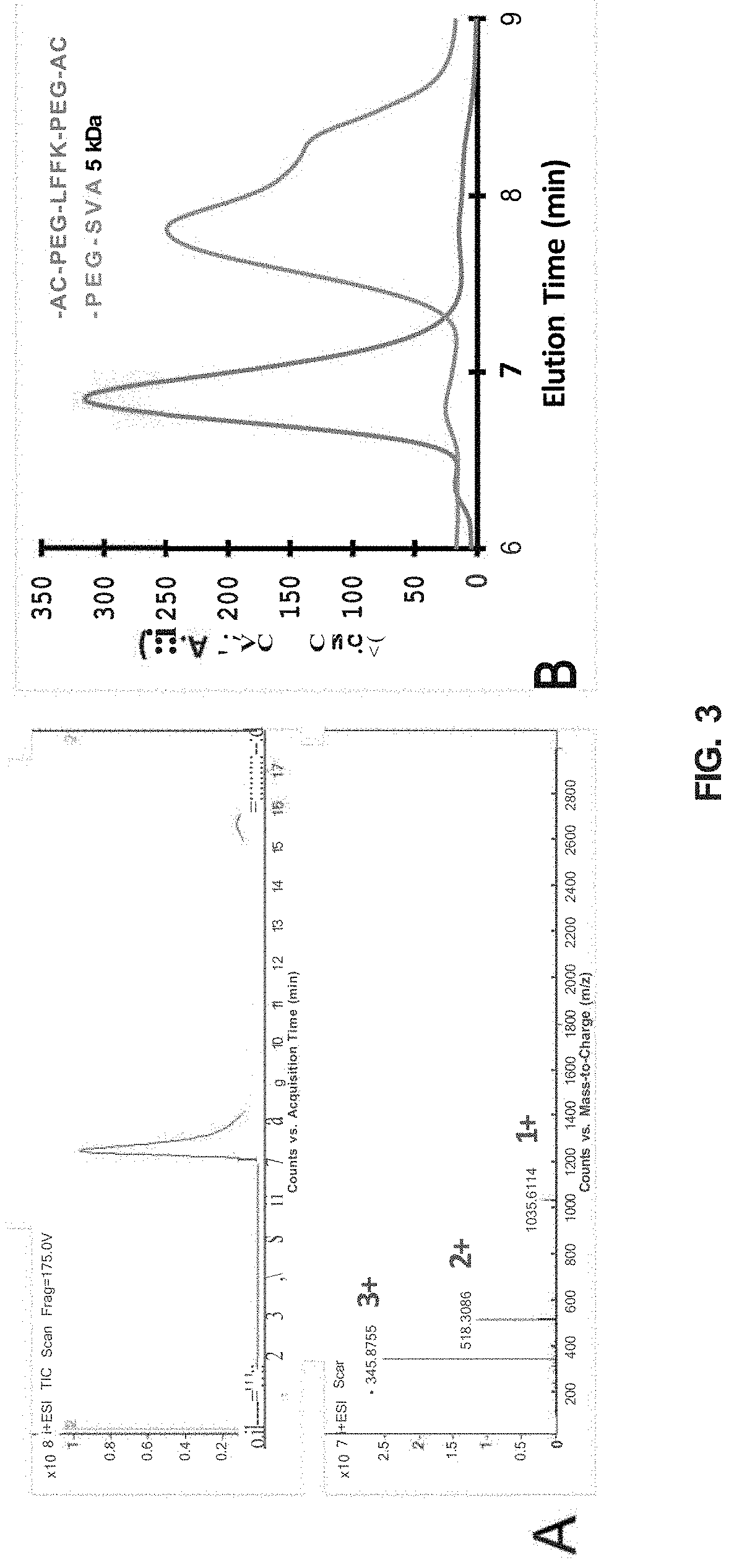Aspartic protease-triggered antifungal hydrogels
a technology of aspartic protease and antifungal gel, which is applied in the field of antifungal gel, can solve the problems of increasing the severity of the infection, a clinical problem, and a more drug resistant fungus
- Summary
- Abstract
- Description
- Claims
- Application Information
AI Technical Summary
Benefits of technology
Problems solved by technology
Method used
Image
Examples
example 1 preparation
of the Biocompatible Hydrogel
LFFK Synthesis and Characterization
[0085]Virulent C. albicans secrete aspartic proteases (Saps) that aid in pathogen tissue invasion and proliferation. The biocompatible hydrogels of the present invention take advantage of this by degrading in the presence of these Saps, releasing the loaded therapeutic in a triggered manner (see FIG. 1). Delivering the antifungal on-demand can help in the prevention of drug resistance and reduce off-site toxicity.
[0086]The peptide LFFK (FIG. 2), which has been shown to be readily cleaved by C. albicans Saps, was synthesized using solid-phase peptide synthesis with standard FMOC chemistry using a protocol adapted from Coin, et al.19 Briefly, a polystyrene resin, rink amide 4-methylbenzhydrylamine (MBHA), was swollen in dimethylformamide (DMF) for 30 minutes. The resin's FMOC-protected amine was deprotected using a 20% piperidine solution in DMF for 20 minutes. Following a wash with DMF, a solution of 0.4 M methylmorpholi...
example 2
Assessment of the Biocompatible Hydrogel
[0092]Degradation and Release with Exposure to C. albicans
[0093]Initially, hydrogel degradation was evaluated over agar infected with C. albicans 10231 to simulate an infected wound environment. These 10% (w / v) PEG-LFFK-PEG hydrogels contained no drug and degraded in approximately 5 days (FIG. 8). The reduction in hydrogel degradation time was likely the result of the hydrogel only being exposed to C. albicans on the bottom surface of the hydrogel, which was in contact with the agar, as opposed to being submerged in a solution of Saps.
[0094]Subsequent degradation and release studies were conducted using secreted aspartic proteases extracted from C. albicans.
Sap Extraction from Candida albicans
[0095]In order to stimulate Sap production, C. albicans ATCC 10231 was inoculated in yeast carbon base supplemented with bovine serum albumin (BSA) as the sole source of nitrogen.26 Protease extraction protocol was adapted from Germaine, et al.27 Brief...
PUM
| Property | Measurement | Unit |
|---|---|---|
| concentration | aaaaa | aaaaa |
| size | aaaaa | aaaaa |
| molecular weight | aaaaa | aaaaa |
Abstract
Description
Claims
Application Information
 Login to View More
Login to View More - R&D
- Intellectual Property
- Life Sciences
- Materials
- Tech Scout
- Unparalleled Data Quality
- Higher Quality Content
- 60% Fewer Hallucinations
Browse by: Latest US Patents, China's latest patents, Technical Efficacy Thesaurus, Application Domain, Technology Topic, Popular Technical Reports.
© 2025 PatSnap. All rights reserved.Legal|Privacy policy|Modern Slavery Act Transparency Statement|Sitemap|About US| Contact US: help@patsnap.com



